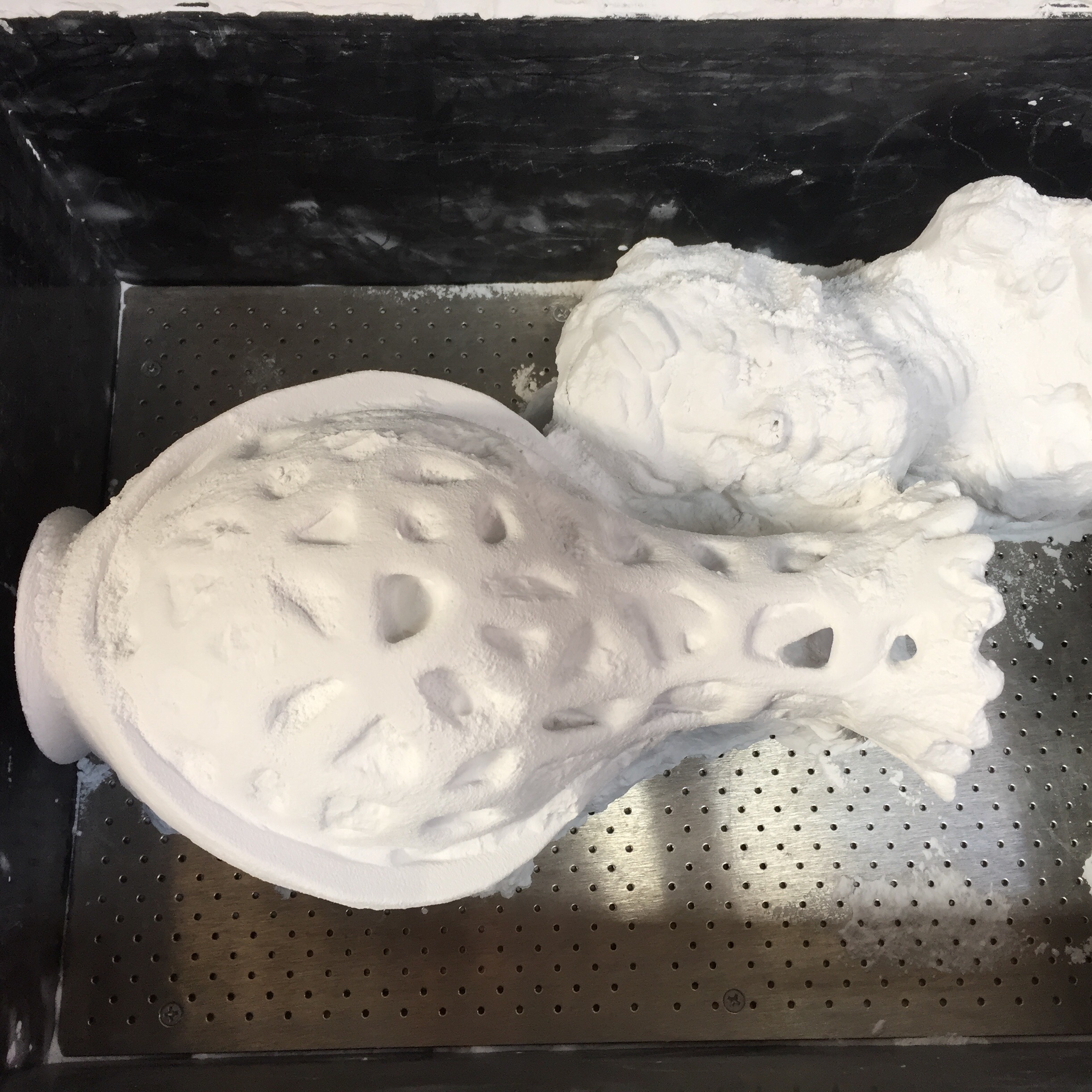Introduction:
I had been talking to Andy Jeffery and Forrest Snyder of 3D Systems for some time, in fact since they were Figulo, a small Boston company that were developing ceramic 3D printing.
Andy is a material scientist, engineer and entrepreneur and Forrest is a ceramicist, having lectured on the subject at Harvard. They make a great partnership, Andy tinkering and refining the ceramic powder and Forrest linking the material to the world of pots, both studio and industrial.
So when Iain Cartwright of the British Ceramics Biennial asked me to curate the 3D printing section of the Festival I got in touch with Andy and Forrest. I hoped to persuade them that it would be worthwhile to bring their printer to the heart of the UK ceramics world in Stoke-on-Trent.
The modified 3D Systems 650 ceramic printer installed in the old Spode factory.
25 - 27.09.15
After an exploratory trip to Stoke, Andy got the go-ahead from 3D Systems and the printer arrived at the old Spode factory the day before the opening. For me it meant a sharp learning curve, as I only had 2 days in which to learn to use it. But Forrest is an excellent teacher and had me involved from the outset. In the run up to the Festival we had invited a number of artists and designers to submit their CAD files for printing. Strict guidelines had to be adhered to, but a number of designs were accepted and prepared for printing. The first build comprised of 15 small, twin-walled beakers, used to test easily the excess powder could be removed and perform in the firings. The design incorporated rounded and squared edges, used to evaluate how the glaze responded.
Once a print is complete, the pieces can be gently excavated by de-powdering, using a vacuum hose and brushes. Ideally the pieces should be left in the printer for about 24 hours to allow them to dry and harden, making them less prone to damage. However, the Spode factory is quite cold [and likely to get colder], so we damaged a few of the beakers due to their fragility.
30.09.15
Andy and Forrest returned to Boston today, so it’s now up to me, with the assistance of Jo Ayres the studio manager, to keep the machine running.
The first batch of test beakers had been successfully fired and slipped, so they are ready for glaze testing.
I was greeted with a number of pieces in the de-powdering unit, some of which had broken, probably as a result of being removed too soon from the printer. Fortunately, my Spode-u-Like plate wasn’t one of them, though the support structure [used to prevent the shallow plate from slumping during the firing] was damaged.
My Spode-u-Like, based partly on a Spode Portland vase design, incorporating imagery that I used on my Prtlnd Vase. I intend for these pieces to be decorated by ex-Spode painters and for them to be fired in the Spode factory.
A vase by Jennifer Gray and bust by John Rainey in the build chamber
I finished the de-powdering of those pieces, then set about removing the new build from the printer. It comprised a piece by Jennifer Gray, a 2 part piece by John Rainey and a test beaker. It was a time-consuming business to find the pieces with the build chamber, but after gently working in the edges they were located, cleaned and places in the de-powdering unit.
I think spent some time talking to a group of students and was disappointed on my return to find that Jennifer Gray’s piece had collapsed, probably due to the weight of the internal excess powder not being able to be supported by the open lattice structure.
A bust by John Rainey, awaiting biscuit firing.
Once I had cleaned the pieces, I started a new build of the same pieces, hoping to be more successful this time. I won’t be back in Stoke until Next Tuesday, so it will be up to Jo Ayres, the studio manager to keep things moving forward.



